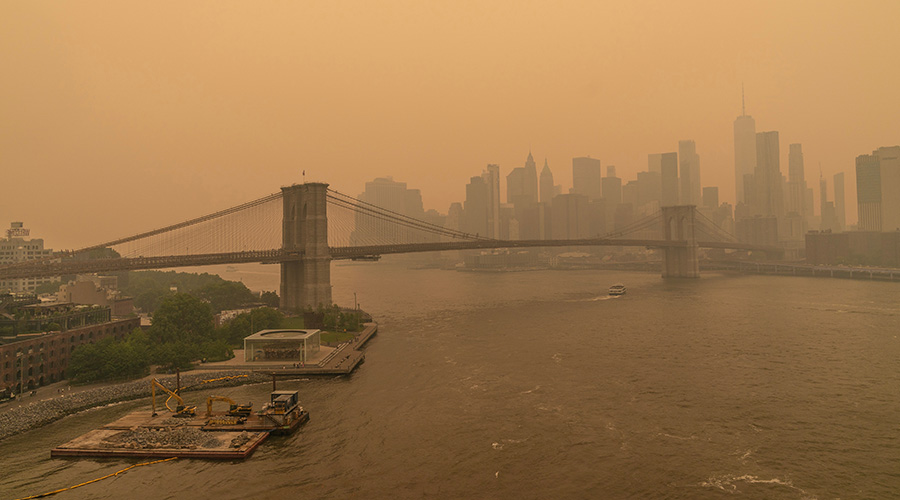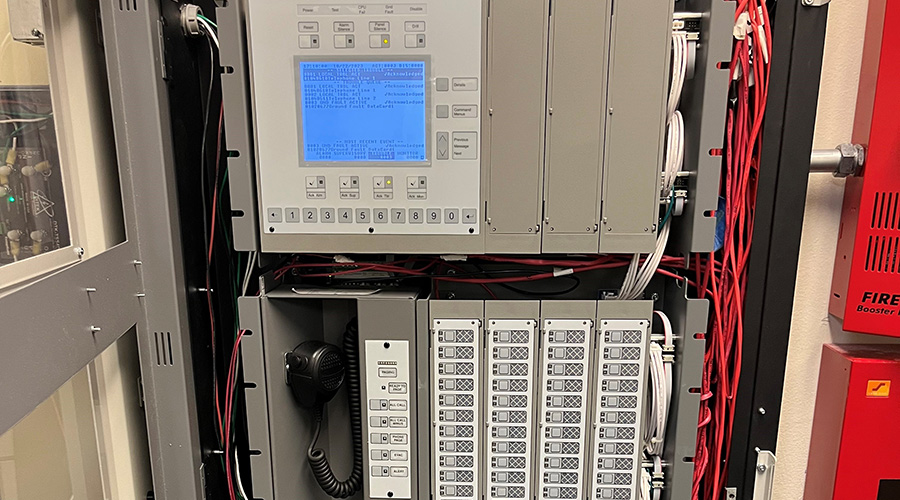What it Costs to Ignore Fire Safety System Maintenance
Ignoring small red flags can lead to significant operational and financial losses.
Neglecting inspections has consequences that extend beyond compliance citations. When systems fail to activate during a fire, the costs can be catastrophic.
“There are numerous issues that give hints to a pending issue or failure,” Parrish says. “For example, an air compressor on a dry system that runs too frequently may indicate an air leak. This should trigger an investigation before the system activates. These alerts are sometimes ignored.”
Ignoring small red flags can lead to significant operational and financial losses.
“Neglecting regular water-based fire protection system inspection, testing, and maintenance can lead to improper or poor performance of the systems, limiting these systems’ ability to control a fire, save lives, and save property,” Joanis says.
The statistics speak for themselves: “Deaths in sprinkler-protected buildings are reduced by 99 percent and property damage by 90 percent, compared to those without fire sprinklers,” says Joanis, a licensed fire protection engineer and sprinkler contractor.
For Mark DeMarco of Fire Safety MD, the issue is also operational efficiency. He notes that failed inspections often reveal problems that could have been addressed far earlier, saving both downtime and cost.
“Neglecting testing and maintenance often leads to failed inspections, costly repairs, and system downtime that could have been avoided with regular oversight,” says DeMarco, a Certified Fire Safety Inspector II. “The five-year inspection, for example, is critical as it mandates internal pipe inspections to determine the presenceof microbiologically influenced corrosion and internal inspections of backflow preventers and other check valves in the system.”
“When check valves are neglected, pressure fluctuations add wear and tear on pneumatictimers in water flow switches, shortening theirlife spanand leading to more nuisance fire alarms,” explains DeMarco.
With today’s technology, there is no excuse for facilities to neglect fire system training, concludes DeMarco, who oversees hundreds of fire safety systems in a large Florida theme park.
“Computer-based training and regular refresher courses are inexpensive to implement and easy to track,” he adds. “Work order applications can also automate reminders for daily, weekly, monthly, and annual tasks. But without proper oversight and enforcement, these tools lose their value — often resulting in costly lessons learned the hard way.”
He likens the often-neglected fire sprinkler maintenance and inspections to the same neglect of a spare tire in the trunk of a car.
“You just hope and pray that when you have a flat tire, the spare is pressurized and not dry-rotted when needed,” DeMarco says. “Many building owners lack in-house expertise on how to properly maintain their fire protection systems, and third-party maintenance contracts are often renewed or rebid right before the mandatory five-year inspection — causing this critical requirement to be overlooked.”
The bottom line: proactive inspections and timely maintenance do not just prevent fires from spreading — they also protect budgets and business continuity.
Denhardt also emphasizes the implications of liability.
“While fire damage costs can be measured, the downtime of production and legal exposure can be catastrophic,” he says. “If people are injured or die because of neglected fire protection, the liability is enormous — and insurance companies may deny negligence claims.”
Training and technology
Managers do not have to tackle fire protection alone. Experts say that frontline staff such as technicians and custodial workers can play a critical role in spotting issues early, provided they have the proper training.
“Maintenance and janitorial staff can be easily trained to look at these valves as they conduct their daily duties,” Parrish says. “When all sprinkler valves are indicating, anyone can tell if they are open or closed by just looking at them. Training is important and may allow people not directly involved with the system maintenance the ability to assist in making sure the systems are in compliance.”
Joanis agrees, pointing to resources such as NFSA training to help facilities build broad-based awareness.
“Training from the National Fire Sprinkler Association” can help frontline staff recognize issues that might otherwise go unnoticed, he says. “Many times, when a system fails to operate, it is attributed to a closed valve that should have been discovered during routine maintenance or inspections.”
Denhardt concurs that training should be leveraged more.
“A process should be developed to educate, train, and reward staff who catch developing issues early,” argues Denhardt. “The American Fire Sprinkler Association (AFSA) provides facility manager training tailored to the needs of staff at any level.”
Technology also has a growing role to play. New digital tools, including automated tracking systems and self-testing devices, are beginning to streamline inspections and data collection. Joanis highlights remote fire sprinkler system inspection, testing, and maintenance as one of the most notable innovations on the horizon.
Still, experts stress that no technology can fully replace human oversight.
“Automated tracking systems are important, but we need to get proper and correct data entered into them,” Parrish says. “I believe they will not and cannot replace the boots on the ground conducting proper visual inspections.”
“NFPA 72 governs fire alarm systems (Chapter 14), while NFPA 25 covers water-based sprinkler inspections,” continues Parish. “Many items, such as valve tamper switches and waterflow switches, appear in both documents, and may have different requirements.”
Raising standards
The message from experts is clear: annual and quarterly inspections are only the foundation. True reliability requires long-term compliance with NFPA standards, proactive troubleshooting, and a culture of awareness.
“Whether you are managing a hotel, distribution warehouse, college dormitory, or apartment complex, neglecting fire system maintenance puts everyone at risk,” DeMarco says. “The consequences — deaths, injuries, property damage, lost revenue — can be catastrophic, and in many cases, businesses never recover.”
NFPA 25 continues to evolve in response to real-world field experience, Denhardt says.
“It’s important to remember that NFPA 25 is a minimum consensus standard, not a ceiling. Insurance carriers and local Authorities Having Jurisdiction (AHJs), such as fire marshals or building code officials, may impose stricter ITM requirements to address specific risks in their communities.”
For facility managers, the mandate is clear. Fire protection cannot bechecked off a list once a year. It must be a continuous, strategic priority.
Joel Williams is a freelance writer based in Frankfort, Illinois.
Related Topics:













